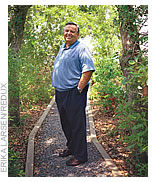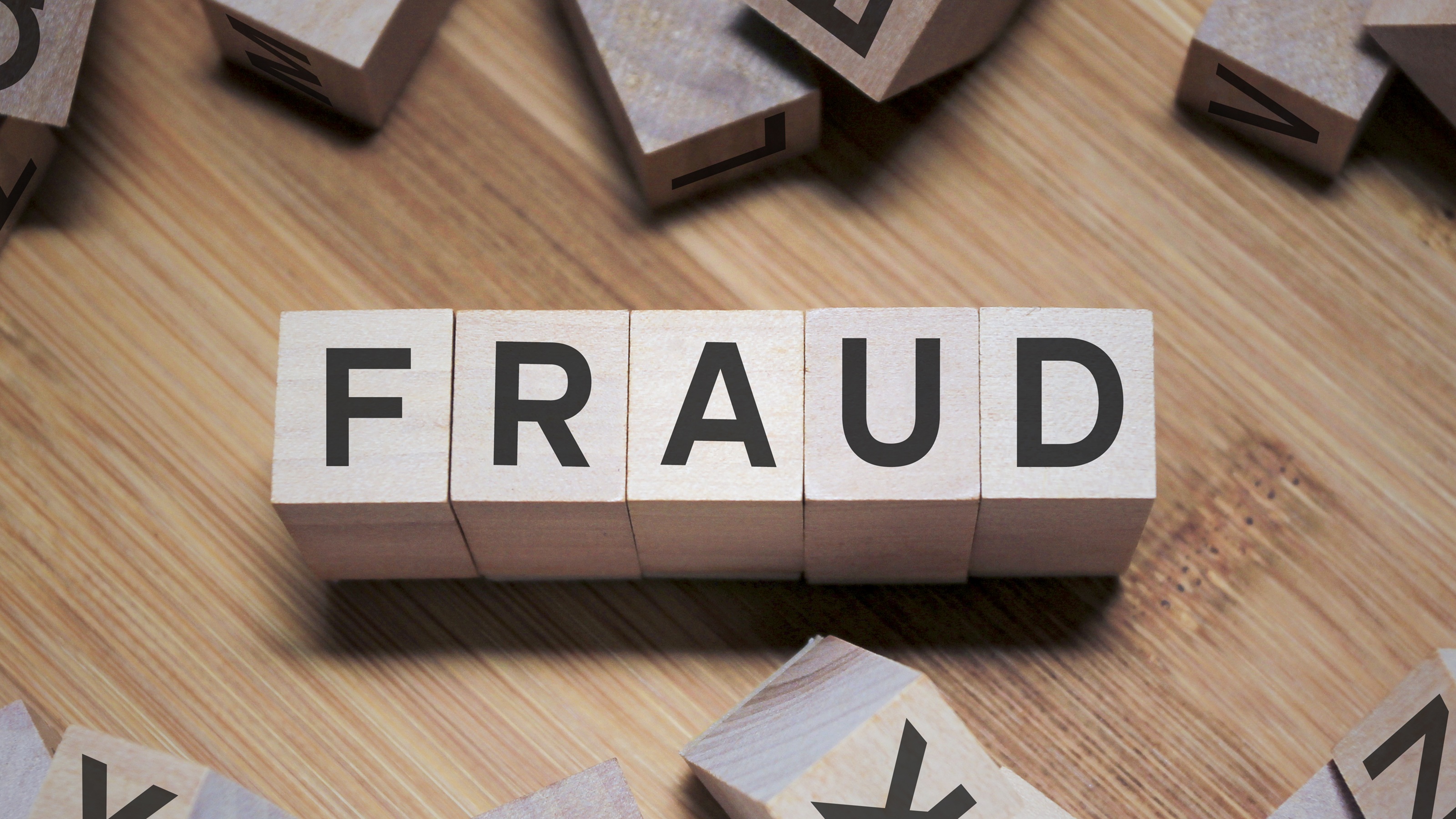A Safe Way to Combat Inflation
A low-risk fund and CDs may be the right mix for a risk-averse retiree.


OUR READER:
WHO: Dennis Kotek, 64
WHAT: Retired from medical-device sales, now a part-time real estate agent
From just $107.88 $24.99 for Kiplinger Personal Finance
Become a smarter, better informed investor. Subscribe from just $107.88 $24.99, plus get up to 4 Special Issues

Sign up for Kiplinger’s Free Newsletters
Profit and prosper with the best of expert advice on investing, taxes, retirement, personal finance and more - straight to your e-mail.
Profit and prosper with the best of expert advice - straight to your e-mail.
WHERE: Surf City, N.C.
SYMPTOM: Has a fortune in a money-market fund in his IRA but fears losing big to inflation.
Dennis could fabricate a tall tale to explain his decision to pull $600,000 of IRA savings out of the stock market a year ago. But he's too honest to claim he foresaw a bear market. "Dumb luck," says Dennis, who moved from Chicago to North Carolina for work 18 years ago and retired with his wife, Janet, to the beach and golf course in 2004.
Dennis accumulated his stake through company stock purchases and retirement plans. At first, he rolled the stash into Vanguard LifeStrategy Conservative Growth fund. In October 2007, he moved all of it to a Vanguard money-market fund. The fund yields a puny 2.2%, but the chance of it losing value is virtually zero.
For now, Dennis can leave his IRA money alone. He has pension income, collects interest on certificates of deposit and earns commissions from selling property on the Carolina coast. But with sales of even oceanfront property in a rut, Dennis expects to tap the IRA before he's 70, the age at which you must begin making withdrawals. As he waits, he's no longer willing to accept a return that's well below the inflation rate.
Dennis has never made -- and doesn't want to make -- many decisions about his investments. His instinct is to be cautious and place no more than 40% in stocks, with the rest in bonds or cashlike investments.
Financial pros laud Dennis for rethinking his allocation, but urge him to weigh carefully the risks and rewards. "The first decision is determining how much is to be exposed to risk at all," says Michael Kitces, of Pinnacle Advisory Group, in Columbia, Md. That means anything that can lose money, including bonds, bond funds and commodities, as well as stocks.
Kitces says a retiree needs to put at least 30% to 40% of a portfolio in "risk assets" to stand a chance of earning a return that matches inflation. But he advises against placing more than 70% in such assets because the potential rewards aren't enough to offset the chance of painful losses.
Dennis's next job is to decide how many investments to track. He's comfortable putting a large chunk of his money in one investment, so the challenge is to identify a well-diversified fund that holds down risk yet offers some growth potential.
An ideal choice, suitable for half of Dennis's assets, is Vanguard Wellesley Income fund. It is a well-diversified fund that typically holds one-third of its assets in stocks and two-thirds in bonds. Year-to-date to August 11, the fund lost 4%, but it hasn't lost more than 3% in any quarter since 2002. Over the past ten years, it gained an annualized 6%.
Dennis can pair Wellesley Income with laddered CDs, which should yield more than a money fund does now. And when the Federal Reserve raises short-term interest rates to combat inflation, he can move cash into newly energized money-market funds.
Profit and prosper with the best of Kiplinger's advice on investing, taxes, retirement, personal finance and much more. Delivered daily. Enter your email in the box and click Sign Me Up.

Kosnett is the editor of Kiplinger Investing for Income and writes the "Cash in Hand" column for Kiplinger Personal Finance. He is an income-investing expert who covers bonds, real estate investment trusts, oil and gas income deals, dividend stocks and anything else that pays interest and dividends. He joined Kiplinger in 1981 after six years in newspapers, including the Baltimore Sun. He is a 1976 journalism graduate from the Medill School at Northwestern University and completed an executive program at the Carnegie-Mellon University business school in 1978.
-
 You Really Can Make New Year's Money Resolutions That Stick
You Really Can Make New Year's Money Resolutions That StickThe secret to keeping your New Year's financial resolutions? Just make your savings and retirement contributions 100% automatic.
-
 As We Age, Embracing Our Own Self-Doubt Can Be a Gift
As We Age, Embracing Our Own Self-Doubt Can Be a GiftAn aging couple hired a company that illegally required large deposits, and then they decided to stick with the company even after an employee stole from them.
-
 Domestic vs Offshore Asset Protection Trusts: A Basic Guide
Domestic vs Offshore Asset Protection Trusts: A Basic GuideLearn the difference between domestic asset protection trusts and foreign or offshore asset protection trusts to help you decide what might work best for you.
-
 What Does Medicare Not Cover? Eight Things You Should Know
What Does Medicare Not Cover? Eight Things You Should KnowMedicare Part A and Part B leave gaps in your healthcare coverage. But Medicare Advantage has problems, too.
-
 15 Reasons You'll Regret an RV in Retirement
15 Reasons You'll Regret an RV in RetirementMaking Your Money Last Here's why you might regret an RV in retirement. RV-savvy retirees talk about the downsides of spending retirement in a motorhome, travel trailer, fifth wheel, or other recreational vehicle.
-
 457 Plan Contribution Limits for 2026
457 Plan Contribution Limits for 2026Retirement plans There are higher 457 plan contribution limits in 2026. That's good news for state and local government employees.
-
 Estate Planning Checklist: 13 Smart Moves
Estate Planning Checklist: 13 Smart Movesretirement Follow this estate planning checklist for you (and your heirs) to hold on to more of your hard-earned money.
-
 Medicare Basics: 12 Things You Need to Know
Medicare Basics: 12 Things You Need to KnowMedicare There's Medicare Part A, Part B, Part D, Medigap plans, Medicare Advantage plans and so on. We sort out the confusion about signing up for Medicare — and much more.
-
 The Seven Worst Assets to Leave Your Kids or Grandkids
The Seven Worst Assets to Leave Your Kids or Grandkidsinheritance Leaving these assets to your loved ones may be more trouble than it’s worth. Here's how to avoid adding to their grief after you're gone.
-
 SEP IRA Contribution Limits for 2026
SEP IRA Contribution Limits for 2026SEP IRA A good option for small business owners, SEP IRAs allow individual annual contributions of as much as $70,000 in 2025, and up to $72,000 in 2026.
-
 Roth IRA Contribution Limits for 2026
Roth IRA Contribution Limits for 2026Roth IRAs Roth IRAs allow you to save for retirement with after-tax dollars while you're working, and then withdraw those contributions and earnings tax-free when you retire. Here's a look at 2026 limits and income-based phaseouts.